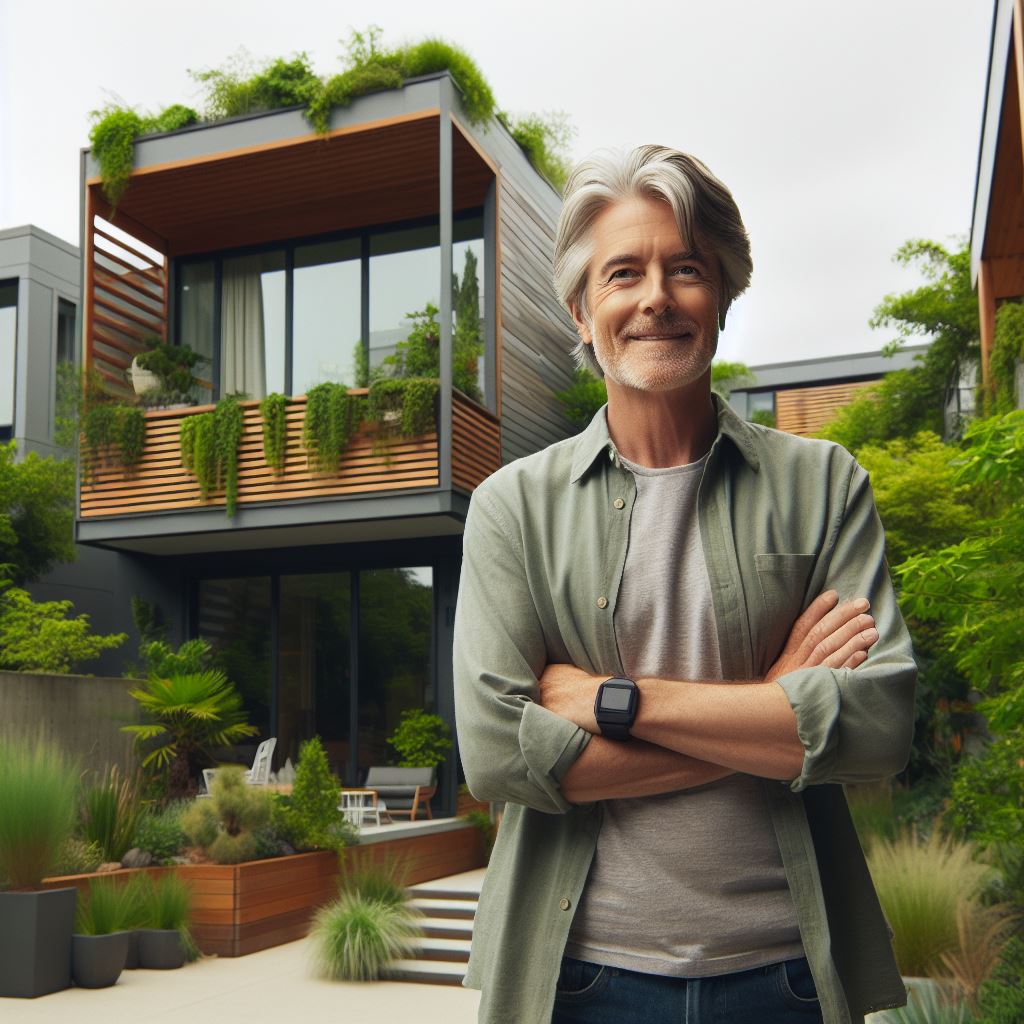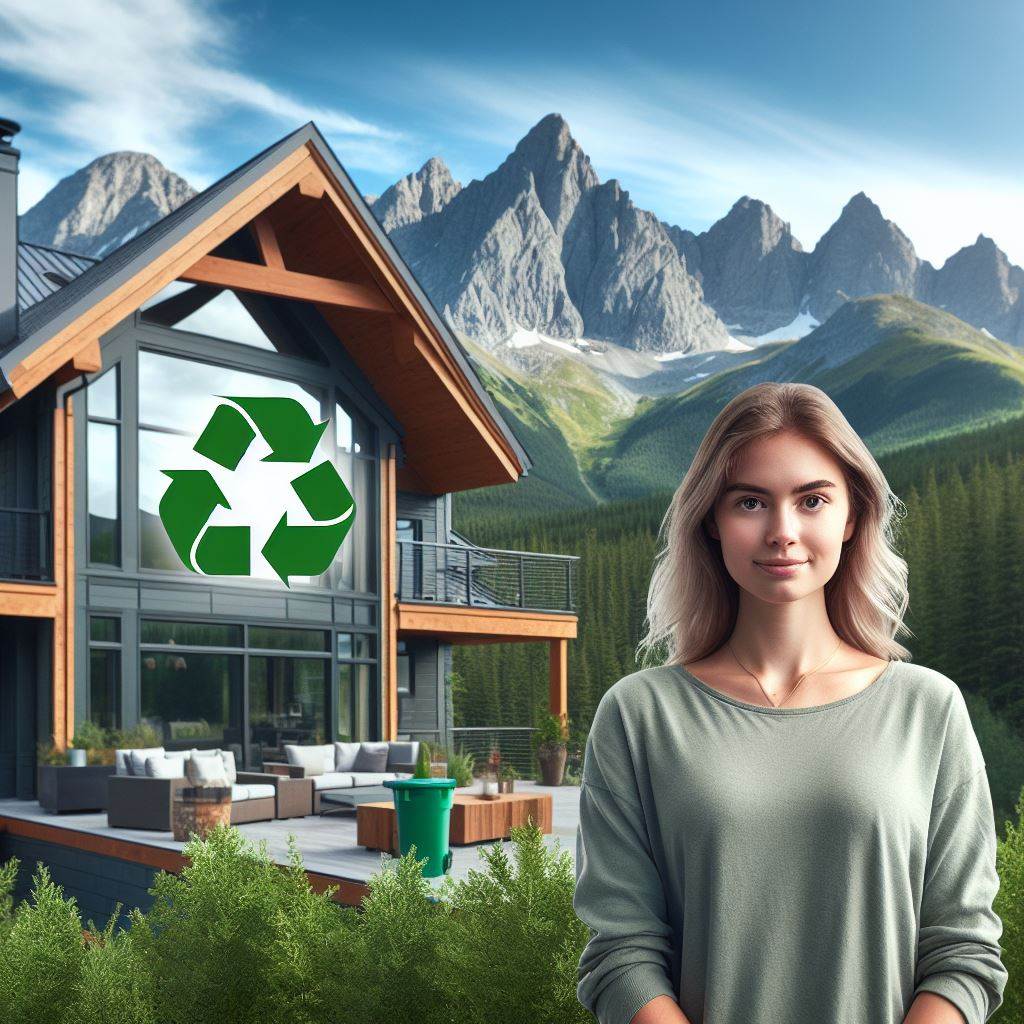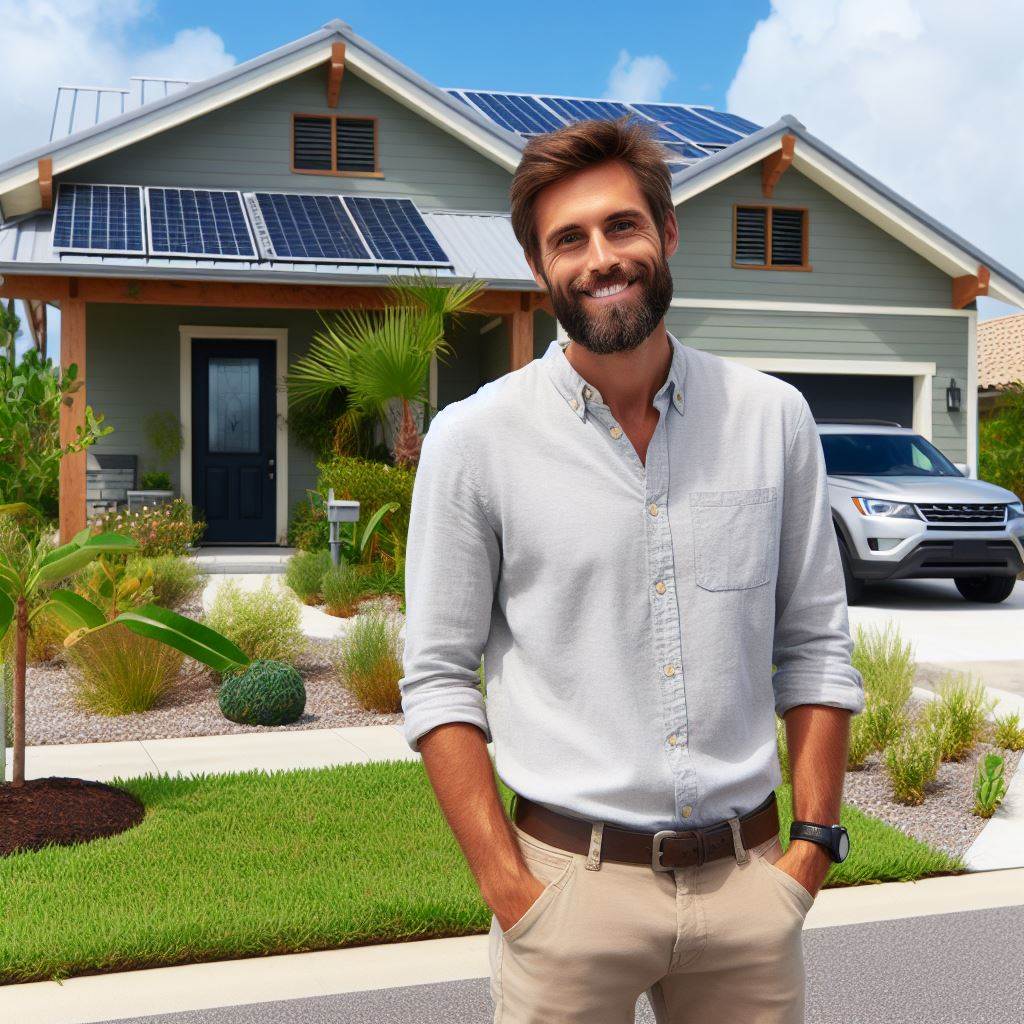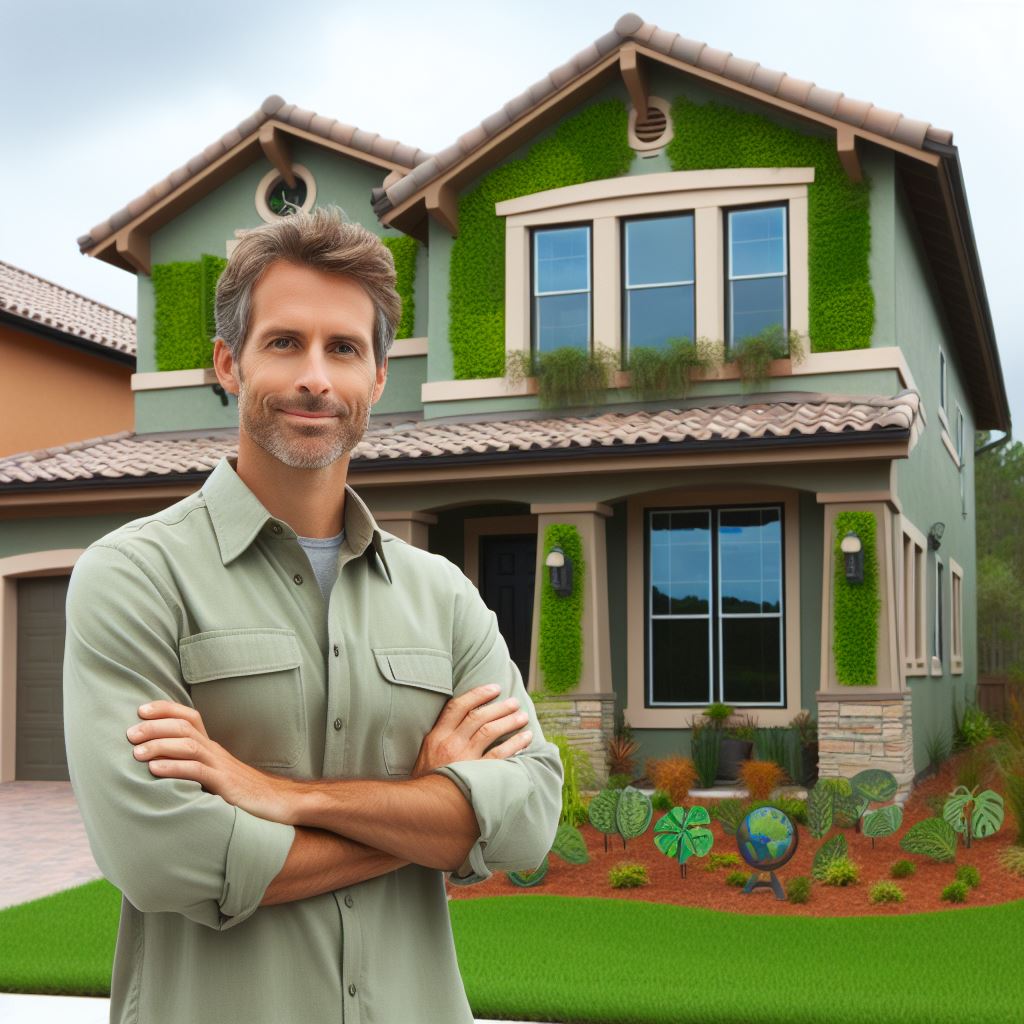Introduction
Eco-conscious real estate refers to properties and developments that prioritize environmental sustainability and conservation.
The Southeast region of the United States encompasses states such as Florida, Georgia, Alabama, Mississippi, and the Carolinas.
It covers diverse landscapes including coastal regions, forests, and mountains.
In recent years, the Southeast region has experienced a significant rise in eco-conscious real estate development.
This trend can be attributed to several factors, including an increased awareness of environmental issues, a growing demand for sustainable living, and government incentives promoting green initiatives.
Developers in the Southeast are embracing eco-conscious practices by integrating sustainable features into their real estate projects.
These features may include energy-efficient appliances, solar panels, rainwater harvesting systems, and green building materials.
By incorporating these elements, developers are not only reducing the environmental impact of their projects but also providing cost-saving benefits to homeowners.
The Southeast’s diverse landscapes allow for unique eco-conscious real estate opportunities.
Coastal areas are incorporating eco-friendly designs to mitigate the impact of rising sea levels and protect against hurricanes.
Mountain regions are embracing sustainable building practices to preserve natural resources and minimize disturbance to wildlife habitats.
Urban areas are implementing green infrastructure solutions to improve air quality and promote outdoor activities.
Moreover, the Southeast’s eco-conscious real estate movement is not limited to residential properties.
Commercial buildings, resorts, and even entire eco-communities are being developed to meet the growing demand for sustainable living and tourism.
In essence, the Southeast region is witnessing a significant rise in eco-conscious real estate development.
With a combination of awareness, demand, and government support, developers are integrating sustainable practices into their projects, fostering a greener future for the region.
Growing Trend of Eco-Conscious Real Estate in the Southeast
Increase in demand for eco-friendly homes
The Southeast region has witnessed a significant increase in the demand for eco-friendly homes.
This surge can be attributed to the growing environmental awareness and concerns among individuals.
People are now more conscious of their impact on the environment and are actively seeking greener living options.
There are several benefits associated with eco-conscious living, making it an attractive choice for many homebuyers.
By adopting sustainable practices, individuals can reduce their carbon footprint and contribute to the preservation of natural resources.
Eco-friendly homes often incorporate energy-efficient features such as solar panels, water-saving fixtures, and energy-saving appliances.
These homes are designed to minimize energy consumption and promote a healthier and more sustainable lifestyle.
Implementation of green building practices
Green building practices have gained significant momentum in the Southeast’s real estate market.
Builders and developers are incorporating energy-efficient designs and materials in the construction of eco-conscious homes.
Features like proper insulation, high-performance windows, and smart thermostats contribute to reducing energy consumption.
Alternative energy sources like solar power are becoming increasingly common in eco-friendly homes.
Solar panels are installed to generate clean and renewable energy, reducing reliance on traditional energy sources.
These advancements in green building practices not only benefit the environment but also help homeowners save on energy costs in the long run.
Rise of sustainable communities and developments
Alongside the demand for eco-friendly homes, there has been a rise in sustainable communities and developments in the Southeast.
These communities prioritize the integration of green spaces, urban planning, and access to public transportation.
Developers recognize the importance of preserving natural resources and are incorporating eco-friendly infrastructure into their projects.
By encouraging walkability and providing amenities like community gardens and bike lanes, these sustainable communities promote a greener and healthier lifestyle for residents.
The integration of renewable resources like wind and geothermal energy further enhances the sustainability of these developments.
Importance of certification programs for eco-conscious real estate
Certification programs play a crucial role in ensuring the authenticity and credibility of eco-conscious real estate.
Programs like LEED provide a standardized framework for evaluating the sustainability and energy efficiency of buildings.
By obtaining certification, homeowners can have confidence in the eco-conscious features and practices incorporated into their properties.
Certified eco-friendly homes often command higher resale values and attract environmentally-conscious buyers.
These programs incentivize builders and developers to prioritize sustainability, contributing to the overall expansion of eco-conscious real estate in the Southeast.
In fact, the Southeast has experienced a growing trend of eco-conscious real estate due to increased demand for eco-friendly homes, implementation of green building practices, rise of sustainable communities and developments, and the importance of certification programs.
This shift towards sustainable living reflects the region’s commitment to preserving the environment and creating a greener future.
Read: Eco Urban Living: Northeast’s Green Buildings
Factors Driving the Rise of Southeast’s Eco-Conscious Real Estate
The rise of eco-conscious real estate in the Southeast can be attributed to a combination of factors.
These factors include the region’s climate and geographical advantages, government incentives and policies, as well as the growing consumer demand for sustainable housing options.
Climate and geographical advantages
Climate and geographical advantages play a significant role in driving the popularity of eco-conscious real estate in the Southeast.
The region benefits from abundant sunshine and high solar potential, making it ideal for the implementation of solar energy systems.
The proximity to natural resources such as forests and water bodies allows for sustainable land use and conservation practices.
Government incentives and policies
Government incentives and policies further contribute to the rise of eco-conscious real estate in the Southeast.
Many states in the region offer tax credits and financial incentives for homeowners who invest in energy-efficient homes.
These incentives not only encourage eco-friendly practices but also help reduce the overall cost of sustainable housing.
The presence of regulations promoting eco-friendly construction ensures that new developments meet certain environmental standards.
Consumer demand and changing preferences
Consumer demand and changing preferences also drive the growth of eco-conscious real estate in the Southeast.
The millennial generation, in particular, is known for its sustainability awareness and desire for environmentally-friendly living spaces.
This demographic seeks housing options that align with their values, including energy efficiency and green building materials.
Health and wellness considerations have become increasingly important to homebuyers, leading to a higher demand for homes that support a healthy and sustainable lifestyle.
In short, the rise of eco-conscious real estate in the Southeast is fueled by a variety of factors.
The region’s climate and geographical advantages provide opportunities for renewable energy integration and sustainable land use.
Government incentives and policies incentivize homeowners and developers to adopt eco-friendly practices.
Lastly, consumer demand, particularly from the millennial generation, drives the need for sustainable housing options that promote both environmental responsibility and personal well-being.
As these factors continue to shape the real estate market, the Southeast is poised to become a leader in eco-conscious living.
Read: Green Investing: Solar Homes in the Southwest
Southeast’s Leading Eco-Conscious Real Estate Markets
The Southeast region of the United States is seeing a rise in eco-conscious real estate markets, with cities like Asheville, Charleston, and Miami leading the way.
These cities have placed a strong emphasis on sustainable development, green building projects, and environmentally friendly practices.
Let’s delve deeper into each city’s contributions to the eco-conscious real estate movement.
Asheville, North Carolina
Asheville has established itself as a frontrunner in the eco-conscious real estate market.
The city prioritizes sustainable development, ensuring that new construction projects adhere to green standards.
Asheville’s commitment to environmentally friendly practices can be seen in its diverse range of green building projects and certifications.
From energy-efficient homes to sustainable commercial buildings, Asheville has made significant strides in promoting eco-conscious real estate practices.
Charleston, South Carolina
Charleston stands out for its unique approach to eco-conscious real estate.
The city places great importance on preserving its historic buildings while incorporating green upgrades.
Charleston recognizes the value of maintaining its architectural heritage while embracing sustainability.
By investing in renewable energy infrastructure, such as solar panels and wind turbines, Charleston is creating a blend of history and modern eco-conscious design.
Miami, Florida
Miami is setting the bar high when it comes to eco-conscious real estate.
The city takes a leadership role in energy-efficient building designs, prioritizing sustainability in its construction projects.
Miami’s tropical climate makes it particularly vulnerable to climate change, so the city has embraced resilient construction methods.
Buildings are designed to withstand extreme weather events and rising sea levels, ensuring a sustainable future for Miami’s real estate market.
Overall, Asheville, Charleston, and Miami are leading the way in the Southeast’s rising eco-conscious real estate movement.
These cities have demonstrated a commitment to sustainable development, green building projects, and innovative designs.
By prioritizing eco-conscious practices, these real estate markets not only benefit the environment but also attract environmentally conscious homebuyers and investors.
The Southeast’s future is looking greener than ever.
Read: Eco-Friendly Real Estate in the Pacific Northwest

Benefits and Challenges of Investing in Southeast’s Eco-Conscious Real Estate
Investing in Southeast’s eco-conscious real estate comes with its own set of benefits and challenges. Let’s explore them in detail.
Financial advantages for investors
One of the significant advantages of investing in eco-conscious real estate in the Southeast region is the potential for long-term cost savings.
Eco-friendly properties are designed to be energy-efficient and use sustainable materials, resulting in reduced utility bills and maintenance costs over time.
Investing in eco-conscious real estate attracts a growing market of eco-conscious tenants and buyers.
With the increasing awareness of climate change, more people are seeking properties that align with their sustainable values.
By catering to this demand, investors can attract a wider range of potential tenants and buyers, increasing the property’s desirability and potential return on investment.
Environmental benefits and reduced ecological footprint
Investing in Southeast’s eco-conscious real estate not only offers financial advantages but also contributes to environmental benefits.
Eco-friendly properties prioritize energy efficiency, water conservation, and responsible waste management.
By utilizing sustainable building materials and energy-efficient systems, these properties help reduce greenhouse gas emissions.
They also promote the use of renewable energy sources, such as solar power, which further reduces reliance on fossil fuels.
Investing in eco-conscious real estate also plays a crucial role in preserving natural resources.
These properties often incorporate green spaces, rainwater harvesting, and water-efficient fixtures, contributing to water conservation efforts.
They prioritize recycling and waste reduction, minimizing the overall ecological footprint.
Potential challenges and limitations
While investing in eco-conscious real estate offers numerous benefits, there are also certain challenges and limitations to consider.
One of the primary challenges is higher upfront costs. Eco-friendly features and materials often come at a premium price.
However, it’s essential to consider these costs as long-term investments, given the potential for cost savings in the future.
Another limitation is the limited availability of eco-conscious properties in the Southeast region.
As the demand for sustainable real estate grows, the supply may not meet the market’s needs.
This limited availability may lead to increased competition among investors seeking such properties.
Nevertheless, as the demand for eco-conscious properties continues to rise and governments introduce incentives and regulations favoring sustainability, the availability and affordability of such properties are likely to improve over time.
Despite the challenges and limitations, investing in Southeast’s eco-conscious real estate presents an opportunity for both financial gain and environmental impact.
By considering the long-term benefits, attracting eco-conscious tenants and buyers, and mitigating potential challenges, investors can contribute to a more sustainable future while securing their investments.
Read: New Investment Hotspots in the US
Future Outlook for Southeast’s Eco-Conscious Real Estate
Continued growth and market expansion
The Southeast region has witnessed a steady rise in the demand for eco-conscious real estate.
Developers are increasingly focusing on sustainable practices to meet this growing demand.
The market is expected to continue to expand as more buyers prioritize environmentally-friendly homes.
Innovations in green building technologies and practices
To cater to the eco-conscious market, developers are adopting innovative green building technologies.
Energy-efficient materials and designs are being utilized to reduce the environmental impact of real estate projects.
These green practices are not only eco-friendly but also help homeowners save on energy costs.
Emerging trends and factors influencing the market
1. Zero-net energy homes and buildings
- Zero-net energy homes are gaining popularity in the Southeast as homeowners seek self-sustainability.
- These homes generate as much energy as they consume, reducing carbon footprints and utility bills.
- The cost of installing renewable energy systems has decreased, making it more accessible for homeowners.
2. Integration of smart home technology
- Modern eco-conscious homes are incorporating smart technology, allowing homeowners to monitor and control energy usage.
- Smart thermostats, lighting systems, and appliances help optimize energy consumption and reduce wastage.
- This integration of technology enhances convenience while promoting sustainability.
Collaboration between the real estate industry and environmental organizations
The real estate industry is partnering with environmental organizations to promote eco-conscious practices.
These collaborations aim to educate developers and buyers about the benefits of sustainable construction.
By working together, the real estate industry can drive positive change and create greener communities.
In a nutshell, the future outlook for eco-conscious real estate in the Southeast is promising.
The market will continue to experience growth and expansion driven by increased demand for sustainable properties.
Innovations in green building technologies and practices will further enhance the sustainability of real estate projects.
Emerging trends, such as zero-net energy homes and smart home technology integration, will shape the market.
Collaboration between the real estate industry and environmental organizations will foster the adoption of eco-conscious practices.
Conclusion
The Southeast has witnessed a significant surge in eco-conscious real estate projects, driven by the increasing demand for sustainable living options.
Investing in eco-friendly real estate can provide long-term financial benefits, while also contributing to a greener and healthier environment.
Challenges like higher upfront costs and limited market availability need to be considered.
Sustainable development is crucial for the Southeast’s future as it promotes resource efficiency, reduces environmental impact, and enhances quality of life.
It also attracts environmentally conscious businesses and residents, boosting the economy.
The rise of eco-conscious real estate in the Southeast offers numerous opportunities for investors and homeowners.
Not only does it align with the growing demand for sustainable living, but it also brings financial and environmental benefits.
It is important to address the challenges associated with eco-friendly real estate and focus on sustainable development to ensure a brighter future for the region.




